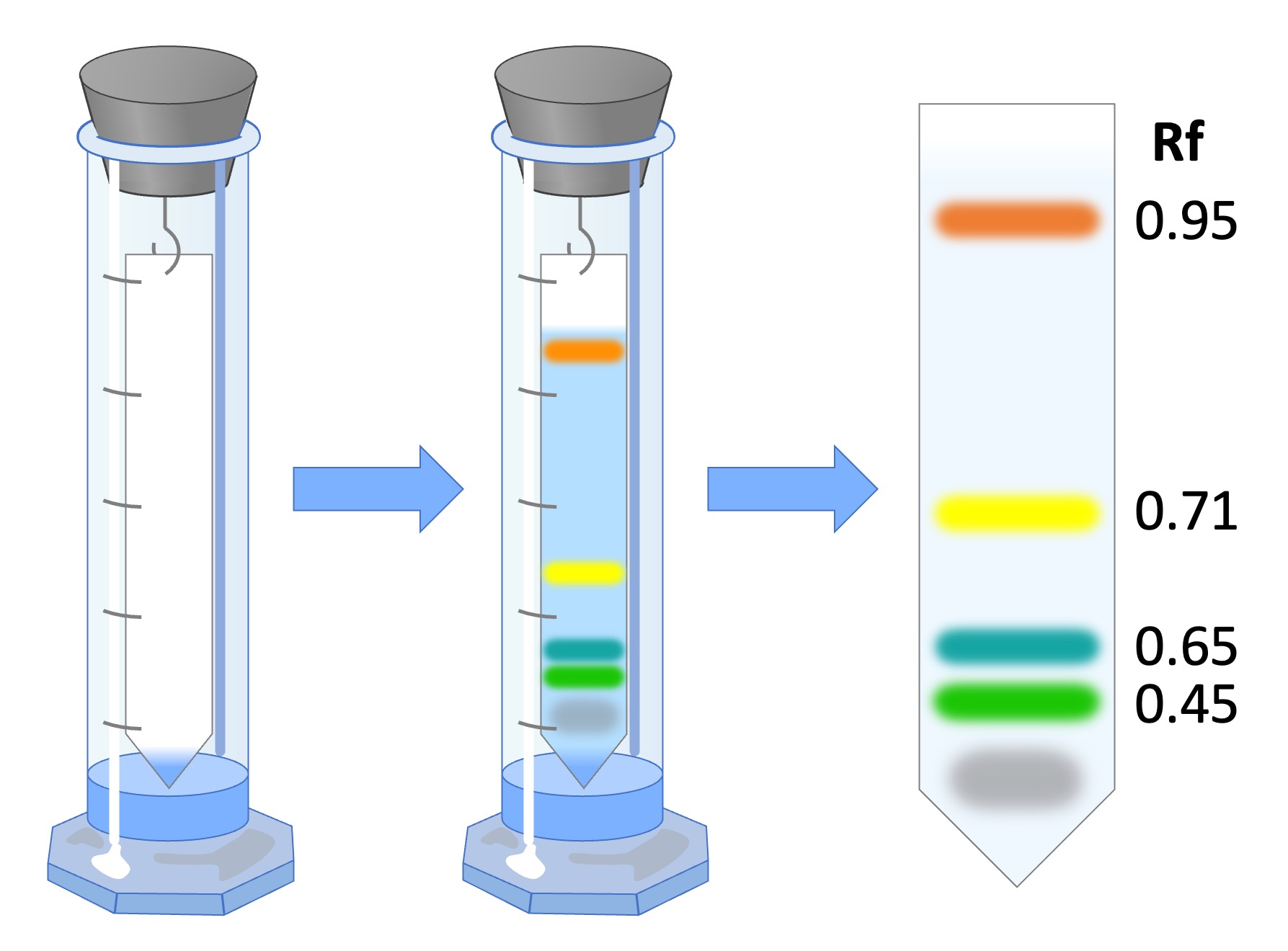

Chromatography
Photosynthetic organisms do not rely on a single pigment to absorb light, but instead benefit from the combined action of many
-
In plants, the main photosynthetic pigment is chlorophyll a – but xanthophylls and carotenes are also used
Chromatography is an experimental technique by which mixtures can be separated
-
A mixture is dissolved in a fluid (called the mobile phase) and passed through a static material (called the stationary phase)
-
The different components of the mixture travel at different speeds, causing them to separate
-
A retardation factor can then be calculated (Rf value = distance component travels ÷ distance solvent travels)
Two of the most common techniques for separating photosynthetic pigments are:
-
Paper chromatography – uses paper (cellulose) as the stationary bed
-
Thin layer chromatography – uses a thin layer of adsorbent (e.g. silica gel) which runs faster and has better separation
Because photosynthetic pigments contain a non-polar tail (for membrane anchorage), a organic solvent such as acetone must be used to dissolve the pigments
Chromatographic Separation





